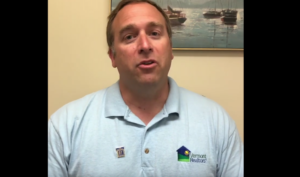Less Taxable Income and Fewer Taxable Expenditures to Put Downward Pressure on Vermont Tax Revenue; Multiple Factors Could Temper Effects for Several Years
 As part of its work to chart a long-term vision for Vermont’s revenue system, the Tax Structure Commission today released a report detailing how demographic shifts will impact some of the State’s major taxes. In Population Changes and Vermont State Revenue, the Commission applies a new focus to the much-discussed topic of demographic change in the state. Specifically, what population trends matter and how will they impact the State’s ability to raise revenue?
As part of its work to chart a long-term vision for Vermont’s revenue system, the Tax Structure Commission today released a report detailing how demographic shifts will impact some of the State’s major taxes. In Population Changes and Vermont State Revenue, the Commission applies a new focus to the much-discussed topic of demographic change in the state. Specifically, what population trends matter and how will they impact the State’s ability to raise revenue?
Population Changes and Vermont State Revenue identifies three major trends:
1) More Seniors, Fewer Children, and Fewer Working-age Adults
- In 1997, Vermont had more than twice as many children (<18) as seniors (65+). By 2017, the two groups were equal, each just under a fifth of the state’s population. In ten years, when the last baby boomers turn 65, seniors will make up a full quarter of the population.
- As of the last census (2010), fewer than 42,000 Vermonters were 75 or older. By 2030, that figure is projected to double to nearly 86,000.
- New Hampshire and Maine have similar age distributions to Vermont. As a result, the three northern New England states are on track to be the oldest in the nation by 2030.
2) More Metropolitan, Less Rural
- Since 2000, three counties around Burlington have grown, while the other 11 counties have either lost population or are virtually unchanged.
- Vermont and Maine are the two most rural states in the nation. Throughout the U.S., rural areas have lost population as younger generations in particular move to metro areas. This trend accelerated in the wake of the Great Recession.
3) More Households with Fewer People
- The average Vermont household is five percent smaller than it was in 2000. Vermont households are statistically tied with North Dakota and Maine as the nation’s smallest.
- The proportion of one-person households has grown five times as fast in Vermont over the last several years as in the nation as a whole.
All three trends affect public finance. On the spending side, health care and retirement costs increasingly loom large. On the revenue side, the trends will impact Vermont’s largest revenue sources: personal income tax, consumption taxes, and education property tax. Population Changes and Vermont State Revenue explores the impact on personal income tax and consumption taxes. The effect on education property tax will be discussed in the Commission’s next paper, which focuses on Vermont’s education finance system.
“The whole nation, and much of the world, is experiencing these trends and figuring out how to adjust public finance systems accordingly,” said Commissioner Steve Trenholm. “So, Vermont’s not alone. But because the trends are particularly acute here with our high proportion of baby boomers, rural communities, and one-person households, we’re tasked with a sharper transition.”
“As more and more baby boomers move into retirement over the next ten to 15 years, the ratio of retired persons to working persons is likely to continue to grow,” noted Commissioner Bram Kleppner. “The challenge is to make our tax system fairer and simpler while at the same time adding enough responsiveness so that the system can evolve as Vermont’s demographics evolve.”
The report points out that Vermont’s income tax structure provides more stability than many states, but the downward pressure on future tax revenue nevertheless strikes a cautionary note.
“Without a crystal ball, the future of these trends and their precise impacts aren’t always clear,” said Commissioner Deb Brighton. “What is pretty clear is that we can’t count on population growth to cover increased spending.”
About the Commission
The Tax Structure Commission was created by Act 11 of 2018 and charged with analyzing Vermont’s revenue system, recommending improvements and modernization, and providing a long-term vision for the tax structure. Independent from both the legislative and executive branches of government, the Commission aims to make the tax system more understandable for the public, help policymakers compare the merits of various options, and offer recommendations that can help Vermont’s revenue system work better for Vermonters. The Commissioners hold regular public meetings and will publish a final report in January 2021.
Key Links
Population Changes and Vermont State Revenue: Executive Summary – Full Report
Tax Structure Commission website: https://ljfo.vermont.gov/committees-and-studies/tax-structure-commission



